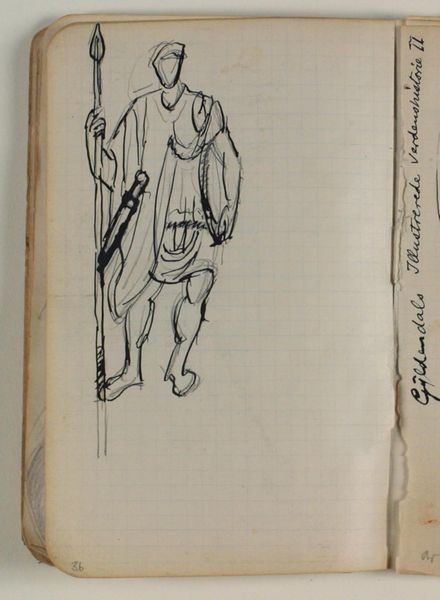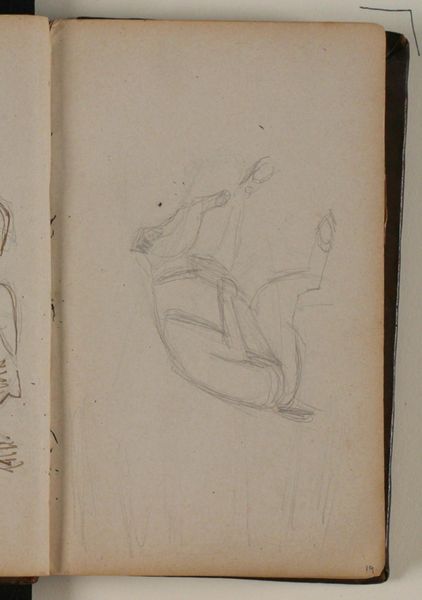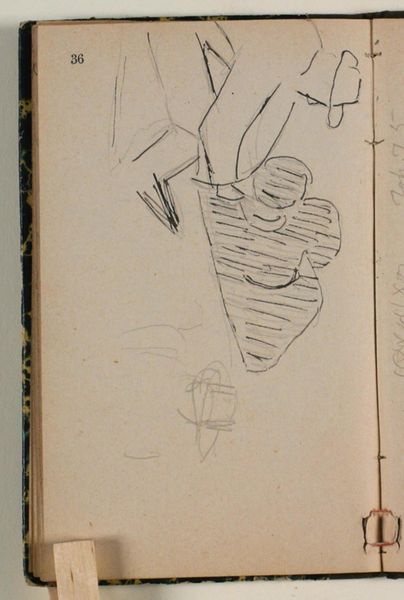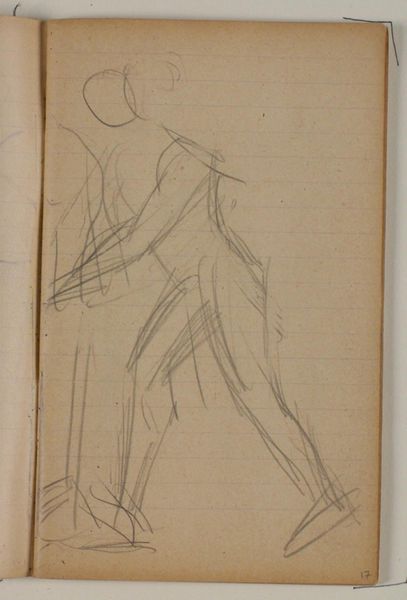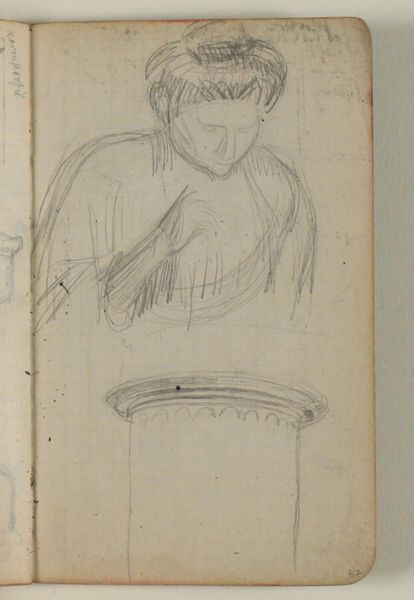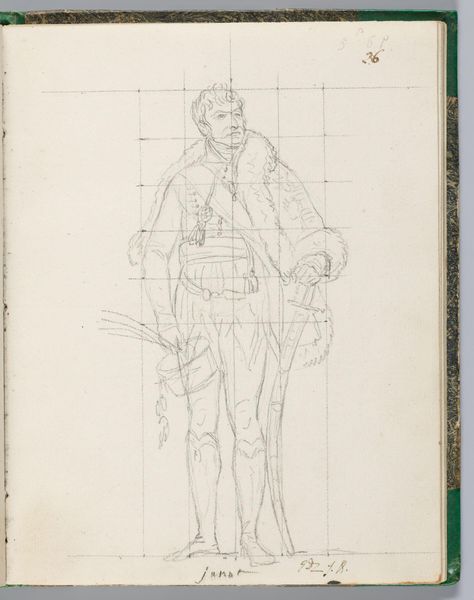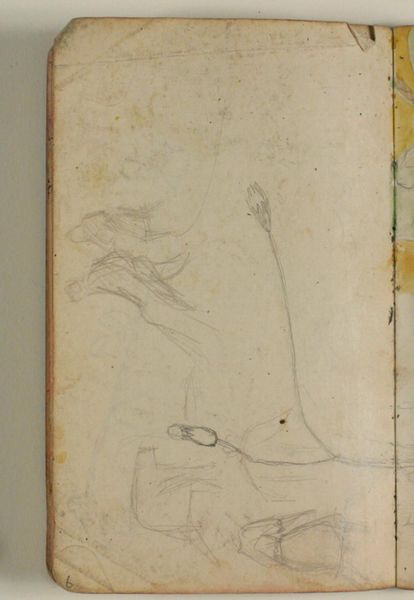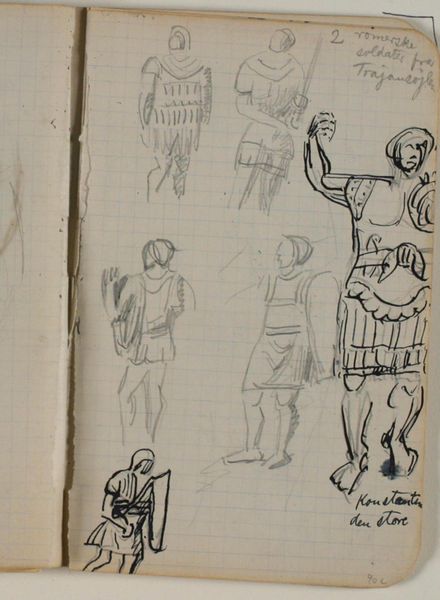
drawing, pencil
#
portrait
#
drawing
#
figuration
#
ancient-mediterranean
#
pencil
Dimensions: 169 mm (height) x 109 mm (width) x 5 mm (depth) (monteringsmaal), 169 mm (height) x 109 mm (width) (bladmaal)
Editor: Here we have Niels Larsen Stevns' "Sketch of a Roman Soldier", created sometime between 1905 and 1907. It's a pencil drawing and feels very immediate, like a page torn straight from a sketchbook. What do you make of this quick study? Curator: What strikes me is Stevns' interest in revisiting classical antiquity at the beginning of the 20th century. The intense nationalism sweeping across Europe, coupled with growing social unrest, led artists to look back to the perceived stability and grandeur of the Roman Empire, although Stevns indicates in handwriting, that this drawing can also be from germanic origin, suggesting a comparison. What aspects of Roman power do you think Stevns might have been drawn to, and perhaps subtly critiquing? Editor: It seems almost romanticizing, or perhaps just trying to understand the past... like he is attempting to represent soldiers as a heroic subject... But with some doubt and ambiguity. How might this sketch function within the context of early 20th-century Danish art? Curator: That’s an insightful point. In Denmark, the period was marked by a search for national identity amid increasing industrialization. Visual art began portraying folk heroes from danish medieval times to counter globalism and cosmopolitan styles such as the drawing exhibited from the Roman period. Also, art became less about monumental grandeur and more about the everyday. Stevns may have felt a tension between these directions, and perhaps, this study embodies that artistic and political crossroads. Editor: That context gives me so much more to think about in terms of the way the artist interpreted his drawing, as something between the glory of the past, the issues of his present, and some romantic influence from germanic and medieval cultures. Curator: Indeed. By grappling with historical images, Stevns unwittingly opens a window into the anxieties of his own era.
Comments
No comments
Be the first to comment and join the conversation on the ultimate creative platform.
